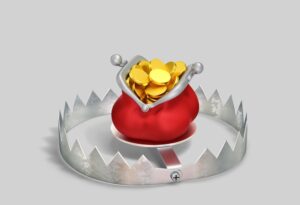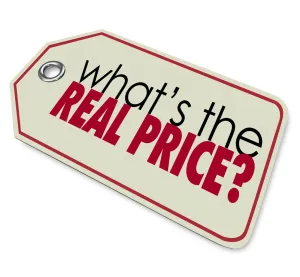 Private equity leverage can dramatically increase ROI, but it can also be a trap. In our previous article, we discussed the general structure of Private Equity, how it works, and the types of Private Equity Groups (PEGs). They have grown rapidly as an alternative investment that produces far better returns than Treasury Bills or publicly traded equities.
Private equity leverage can dramatically increase ROI, but it can also be a trap. In our previous article, we discussed the general structure of Private Equity, how it works, and the types of Private Equity Groups (PEGs). They have grown rapidly as an alternative investment that produces far better returns than Treasury Bills or publicly traded equities.
The Power of OPM (Other People’s Money)
How do they provide these enviable 18% to 25% returns on an investment? The simple answer is leverage. An example most business owners can easily comprehend is a real estate mortgage. You put down $100,000 on a $500,000 building. The mortgage, especially in the first few years, is largely interest expense. You lease the building for a rental rate that covers your mortgage payment and expenses. Two years later you sell the building for $700,000. How much did you make?
The obvious answer is $200,000, but what is your Return on Investment (ROI)? If you said 40% you’d technically be correct. You made a $200,000 profit on a $500,000 investment. But what was your cash-on-cash return?
That is 200%. You actually invested $100,000 of your own money and used the building to secure a loan for the rest. Your profit was $200,000 on a $100,000 investment.
Private Equity Leverage(Other People’s Money)
Extend this example to buying a business. The business makes about $2,000,000 a year. (For the sake of simplicity, we won’t discuss here the differences between cash flow and profit.) The agreed-upon acquisition price is $10,000,000, or five times the profits. The PEG contributes $2,000,000 as a downpayment and finances the remaining $8,000,000. The cash flow of the business must cover the loan payments and leave enough working capital for operations.
A 5% loan amortized over 20 years requires a payment of about $53,000 a month or $636,000 a year. The remaining cash flow ($1,364,000) produces a return of 68% annually on the purchase.
Of course, the Limited Partner investors don’t get all 68%. Some must be kept as working capital for expanding operations. The PEG receives substantial fees for creating the deal and overseeing the investment.
In fact, the 25% return to the investors is only part of the story. If the PEG can double the company to a $4,000,000 profit level, even the exact same 5x multiple on exit could produce a $20,000,000 sale, or an $18,000,000 return on the original $2,000,000 cash outlay. That’s a 900% ROI.
Leveraging the Leverage
Buying a middle-market business with the structure outlined above would be lucrative enough, but of course, as professionals, the PEG would like to maximize their return. They frequently cut expenses dramatically upon acquisition (more on this in the next article.)
Often, they will line up a secondary loan, using the company’s cash flow to reduce or eliminate their downpayment exposure.
Private equity leverageDuring the low-interest environment of the last decade, PEGs could negotiate even more favorable terms. If you replace the 5% loan with a 2.5% loan, the annual cost is reduced to $509,000 annually, leaving a 75% return to work with.
Traditionally, most of the loan terms in private equity purchases reset after a few years. Refinancing at 9% raises the loan cost to about $865,000. Still, a 57% ROI is acceptable, if the business is thriving and the other expenses are kept under control. If the cash flow is covering a secondary loan at an even higher rate to replace the downpayment, or it’s been pledged to cover other debt outside the business, the picture might not be as rosy.
John F. Dini develops transition and succession strategies that allow business owners to exit their companies on their own schedule, with the proceeds they seek and complete control over the process. He takes a coaching approach to client engagements, focusing on helping owners of companies with $1M to $250M in revenue achieve both their desired lifestyles and legacies.



